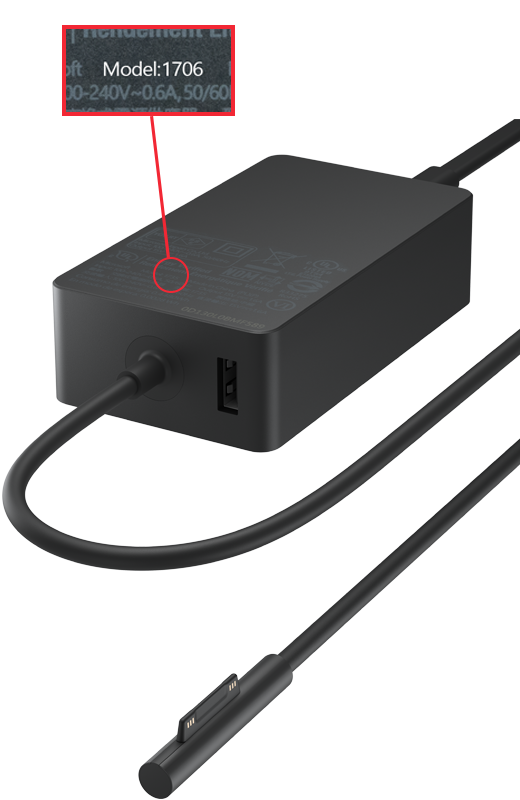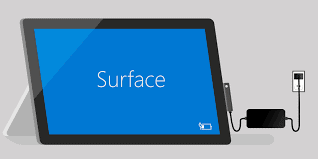Introduction
Welcome to our guide on charging the
Microsoft Surface 3 without a charger. The Surface 3 is a versatile and portable device that offers productivity on the go. However, sometimes you may find yourself without access to a traditional charger.In this article, we'll explore various methods and techniques to keep your Surface 3 powered up even when you don't have your charger handy. Whether you're a frequent traveler, a student in a busy classroom, or simply someone who wants to be prepared for any situation, we've got you covered with practical tips and insights.
Understanding Microsoft Surface 3 Charging

Before delving into alternative charging methods, it's essential to understand how the
Microsoft Surface 3 charges conventionally. The Surface 3 typically comes with a proprietary charger that connects to the device via a magnetic port. This charger delivers the necessary power to recharge the Surface 3's battery efficiently.Surface 3's charging system operates at
5.2 volts and 2.5 amps, providing a total power output of
13 watts. This power rating ensures rapid charging, allowing users to quickly replenish the device's battery and get back to work or play.One of the standout features of the Surface 3's charging mechanism is its
magnetic connector. This magnetic attachment offers several benefits, including:
- Easy Connection: The magnetic connector ensures a secure and effortless connection between the charger and the Surface 3, eliminating the hassle of aligning plugs.
- Prevention of Accidental Damage: The magnetic design helps prevent accidental damage to the charging port by disconnecting the charger if it's yanked or pulled forcefully.
- Convenient Storage: The magnetic connector allows for convenient storage as it can easily attach to the Surface 3 when not in use, reducing clutter and the risk of misplacement.
Additionally, the Surface 3 charger features an LED indicator that displays the charging status. This indicator helps users quickly determine whether the device is charging, fully charged, or experiencing any issues.It's worth noting that while the conventional charger provides a reliable and efficient way to charge the Surface 3, there may be instances where you need to charge the device without access to the original charger. In such cases, exploring alternative charging methods can prove invaluable.
Exploring Alternative Charging Methods
While the conventional charger provided with the
Microsoft Surface 3 offers reliable charging, there are situations where you may need to explore alternative methods to power up your device. Let's explore some of these alternative charging solutions:
- USB-C Power Delivery: The Microsoft Surface 3 features a USB-C port that supports Power Delivery (PD). This allows you to use compatible USB-C chargers to charge your device. Look for chargers with PD support and a power rating suitable for the Surface 3's requirements.
- Portable Power Banks: Invest in a high-quality portable power bank with sufficient capacity to charge your Surface 3. Look for power banks with USB-C PD output and a capacity that meets your charging needs. This option is ideal for on-the-go charging when access to a power outlet is limited.
- Wireless Charging: Although not a built-in feature of the Surface 3, you can explore wireless charging options using compatible wireless charging pads. While this method may be slower than conventional wired charging, it offers convenience and flexibility, especially in environments where cables are cumbersome.
- Solar Chargers: For outdoor enthusiasts or those in remote locations, solar chargers provide an eco-friendly way to recharge your Surface 3 using solar energy. Look for solar chargers with USB outputs compatible with your device and adequate power output to charge effectively.
When opting for alternative charging methods, it's crucial to consider compatibility, power output, and safety. Using uncertified or incompatible chargers can potentially damage your Surface 3 or pose safety risks. Always prioritize quality and reliability when selecting alternative charging solutions.
Comparison of Alternative Charging Methods| Charging Method | Pros | Cons |
|---|
| USB-C Power Delivery | Fast charging, versatility, widely available | Requires compatible charger, may be an additional expense |
| Portable Power Banks | Portable, convenient, ideal for travel | Dependent on battery capacity, may require separate cable |
| Wireless Charging | Convenient, cable-free, flexible | Slower charging speed, compatibility limitations |
| Solar Chargers | Eco-friendly, suitable for outdoor use | Dependent on sunlight availability, slower charging |
Benefits and Drawbacks of Wireless Charging
Wireless charging has gained popularity as a convenient and cable-free method of powering up devices like smartphones, tablets, and even some laptops. Let's examine the benefits and drawbacks of wireless charging specifically for the
Microsoft Surface 3:
Benefits:
- Convenience: Wireless charging eliminates the need for cables, allowing for hassle-free charging. Simply place your Surface 3 on a compatible wireless charging pad, and charging begins automatically.
- Flexibility: With wireless charging, you're not tied down to a specific charging location. You can charge your Surface 3 on any Qi-compatible charging pad, providing flexibility in your workspace or environment.
- Reduced Wear and Tear: Since there are no cables to plug and unplug repeatedly, wireless charging may result in less wear and tear on the charging port of your Surface 3, potentially extending its lifespan.
- Clean and Clutter-Free: Wireless charging pads help declutter your workspace by eliminating the need for multiple charging cables. This creates a cleaner and more organized environment, enhancing productivity.
Drawbacks:
- Slower Charging Speed: Wireless charging typically takes longer compared to wired charging methods. While this may not be an issue for overnight charging or casual use, it can be a drawback if you need a quick power boost.
- Compatibility: Not all devices support wireless charging out of the box. While some newer smartphones and tablets feature built-in wireless charging capabilities, others may require additional accessories or modifications to enable wireless charging.
- Efficiency and Heat: Wireless charging can be less efficient compared to wired charging, leading to energy loss and heat generation. Prolonged exposure to heat may affect the battery health of your Surface 3 over time.
- Cost: Wireless charging pads and accessories may incur additional costs compared to traditional charging cables. While the initial investment may be higher, the convenience and aesthetic appeal of wireless charging may outweigh the cost for some users.
Considering these benefits and drawbacks can help you determine whether wireless charging is the right choice for your
Microsoft Surface 3 charging needs.
Conclusion
In conclusion, charging the Microsoft Surface 3 without a traditional charger is indeed possible through various alternative methods. Understanding the device's charging specifications, exploring alternative charging solutions such as USB-C Power Delivery, portable power banks, wireless charging, and solar chargers can provide flexibility and convenience in various situations.While each alternative charging method has its benefits and drawbacks, users should prioritize compatibility, safety, and efficiency when selecting the most suitable option for their Surface 3 charging needs.Whether you're a frequent traveler, a student on the go, or simply seeking convenient charging solutions for your Surface 3, exploring alternative charging methods opens up a world of possibilities to keep your device powered up and ready for action.By staying informed about the available options and considering your specific requirements, you can ensure that your Microsoft Surface 3 remains charged and operational whenever and wherever you need it.Thank you for joining us on this journey to explore alternative charging methods for the Microsoft Surface 3. We hope this guide has been informative and helpful in enhancing your charging experience with your Surface 3 device.
 Before delving into alternative charging methods, it's essential to understand how the Microsoft Surface 3 charges conventionally. The Surface 3 typically comes with a proprietary charger that connects to the device via a magnetic port. This charger delivers the necessary power to recharge the Surface 3's battery efficiently.Surface 3's charging system operates at 5.2 volts and 2.5 amps, providing a total power output of 13 watts. This power rating ensures rapid charging, allowing users to quickly replenish the device's battery and get back to work or play.One of the standout features of the Surface 3's charging mechanism is its magnetic connector. This magnetic attachment offers several benefits, including:
Before delving into alternative charging methods, it's essential to understand how the Microsoft Surface 3 charges conventionally. The Surface 3 typically comes with a proprietary charger that connects to the device via a magnetic port. This charger delivers the necessary power to recharge the Surface 3's battery efficiently.Surface 3's charging system operates at 5.2 volts and 2.5 amps, providing a total power output of 13 watts. This power rating ensures rapid charging, allowing users to quickly replenish the device's battery and get back to work or play.One of the standout features of the Surface 3's charging mechanism is its magnetic connector. This magnetic attachment offers several benefits, including:
 admin
admin








